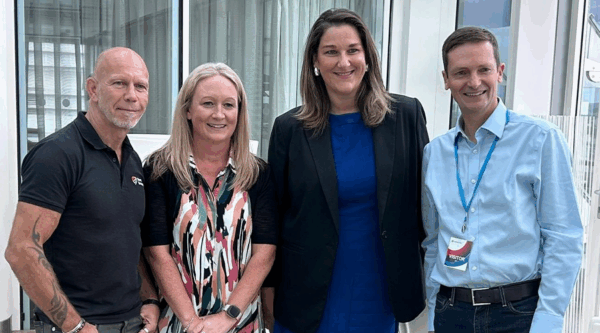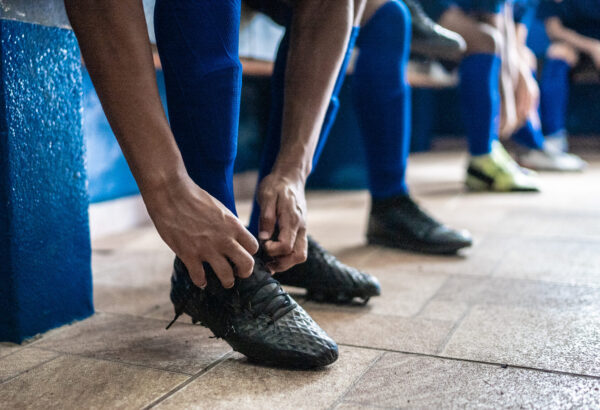
What Tottenham Hotspur’s sponsorship row with INEOS shows about contractual risk in sport
8 September 2025

In June 2025, Tottenham Hotspur FC began High Court proceedings against INEOS Automotive, reportedly seeking around £11m in damages after INEOS terminated a five-year sponsorship deal early.
INEOS has counterclaimed for around £1m, alleging Spurs breached exclusivity terms.
This high-profile case highlights the contractual risks in modern sports sponsorship agreements and offers lessons for rights holders and sponsors alike.
The facts at a glance
Signed in December 2022, the £17.5m five-year sponsorship agreement made the INEOS Grenadier the club’s official 4×4 vehicle partner, with branding across the stadium. The partnership was built on a relationship dating back to 2020, when INEOS Hygienics became the club’s official hand sanitiser supplier.
Spurs claims INEOS missed payments of approximately £480,000 in August 2024 and £5.1m in December 2024, then sought to terminate the agreement without valid grounds. The club is seeking unpaid fees and the remaining value of the agreement, plus interest and legal costs.
INEOS argues it had the right to terminate the agreement in December 2024, following a routine review and strategic changes to its sponsorship portfolio. In particular, it alleges Spurs breached exclusivity provisions by negotiating with Audi around the time of Harry Kane’s move to Bayern Munich in 2023. INEOS claims this triggered an early termination clause and is seeking £1m for lost contractual rights between March and June 2025.
Key legal issues in dispute
- Termination clauses and repudiatory breach
The court will assess whether INEOS lawfully ended the agreement or committed a repudiatory breach by terminating the deal early. Unilateral termination without valid grounds is itself a breach, entitling the other party to damages.
The adequacy, clarity and enforceability of the termination terms, including notice periods and material breach thresholds, will be central to the court’s decision.
- Exclusivity clauses and counterclaim grounds
INEOS’s counterclaim rests on the allegation that Spurs breached exclusivity provisions by negotiating with Audi for the same rights reserved under their agreement. The court must decide if this breached the agreement and whether INEOS followed the correct termination process. INEOS must also prove financial loss resulting from the breach.
Vague or poorly defined exclusivity clauses are unlikely to be enforceable.
- Loss quantification and remedies
It’s believed Spurs is seeking unpaid instalments and forecasted future payments for the rest of the original contractual term, plus interest. INEOS’s counterclaim seeks the value of lost commercial rights post-termination.
Damages must reflect actual loss; speculative or punitive losses are not recoverable. Liquidated damages clauses, which specify a pre-agreed sum payable upon breach of contract, are enforceable if properly drafted to reflect genuine pre-estimates of the loss, not penalties unrelated to the actual loss suffered.
Both parties must also show they tried to mitigate losses. For Spurs, this would include trying to find a replacement sponsor, while for INEOS, it would be attempting to secure alternative sponsorship opportunities.
Wider lessons for the sports industry
Though centred on Spurs, this dispute demonstrates contractual tensions across the sector:
- Elite clubs and global events: institutions like Olympic committees or national federations rely on multi-year sponsorships. These need clear termination and exclusivity terms, especially when reputational issues arise
- Emerging sports and domestic leagues: smaller organisations that rely on single or few sponsors face existential threats from early terminations, making contractual safeguards and dispute mechanisms vital
- Individual athletes and brands: high-profile athletes often enter sponsorship deals tied to performance or public image. Contracts must balance flexibility with enforceability and include clear exit terms.
INEOS was also involved in a similar dispute with New Zealand Rugby, settling in March 2025 after legal action over unpaid sponsorship fees.
Best practice for dispute clauses in sponsorship contracts
To reduce the risk of similar disputes arising, parties to a sponsorship agreement should:
- Draft precise termination clauses with clear triggers and realistic notice terms
- Balance exclusivity and reputational clauses, containing objective criteria and evidence requirements for demonstrating breach
- Include alternative dispute resolution options, such as mediation or arbitration, to reduce reliance on public court proceedings
- Use enforceable liquidated damages clauses
- Balance commercial foresight and flexibility to allow sponsors to adapt to market changes without adversely affecting rights holders.
These priorities apply widely to contracts that sports institutions enter daily.
Conclusion
The Spurs-INEOS case will continue to attract significant media attention, given the global profile of each party – but the legal issues in dispute are likely to arise in other scenarios across the sports sector.
Early termination, exclusivity and liquidated damages provisions in sports sponsorship agreements should be carefully reviewed before termination.
Successful sponsorship deals depend not just on collaboration, but on contracts that anticipate disruption, safeguard the parties’ respective interests and offer pathways to resolution before relationships are damaged.










